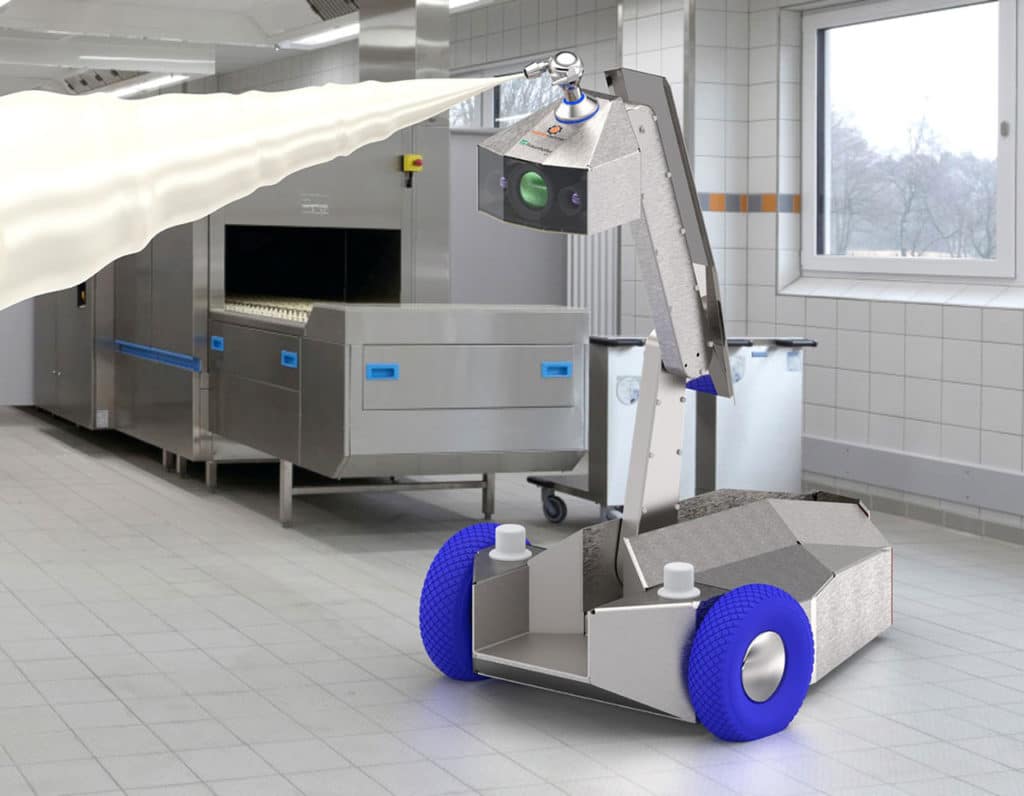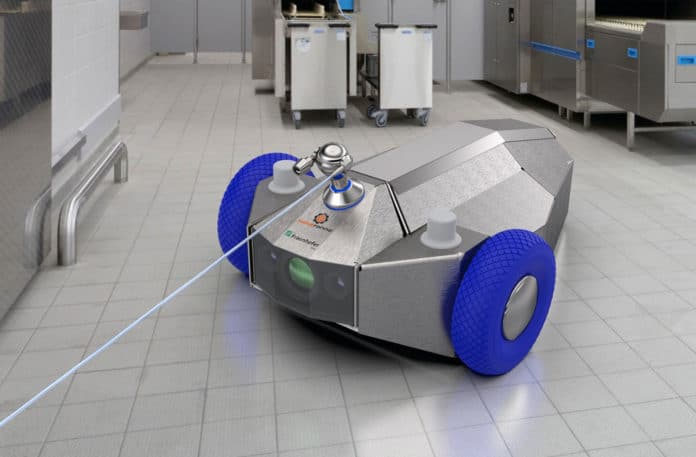Absolute cleanliness is essential, especially where food is processed, and medical instruments are treated. The cleaning result affects hygiene and influences food safety. So far, the demanding and quality-determining cleaning of the production facilities has largely been done manually. But despite all the cares, the work is difficult to reproduce, error-prone, and time-consuming.
A research team at the Fraunhofer Institute for Process Engineering and Packaging IVV in Dresden has come up with a mobile cleaning device that sanitizes equipment and production spaces to standards in a reproducible way. The battery-powered robot named the Mobile Cleaning Device 4.0 (MCD), learns how to clean better over time, thanks to the self-learning and autonomous motility systems.
The modular cleaning robots are currently available in two variants: one model drives through the production system on a conveyor belt and cleans it from the inside, while the second variant cleans the floor, ceiling, and walls of the rooms as well as the outside of the production machines. A freely configurable jet cleaner serves as the basis for efficient and targeted cleaning. An extendable robot arm with a mixture of water and cleaning solution, which is expelled from the robot’s rotary jet cleaner, can stretch to reach high spots on the production line.

The Mobile Cleaning Device 4.0 moves independently; it is only connected to the docking station by a hose from which the cleaning agent is supplied. It is controlled via Wi-Fi.
A multi-sensor system, in combination with the AI, enables the self-driving robot to orient itself even under difficult environmental conditions. Based on the fluorescence method, the installed sensor system scans and calculates the degree of soiling and adapts the cleaning parameters such as the pressure and the amount of cleaning foam accordingly.
A detector detects the fluorescent dirt particles such as fats, oils, and proteins with the help of UV light and doses the foam and water according to the determined parameters, such as the layer thickness and degree of drying. Overall, the cleaning of hygienically demanding rooms can thus be carried out fully automatically, reproducibly, and in a way that conserves resources.
“Our tests have shown that this can save up to 50 percent on cleaning agents because no more than the actually needed amount is applied to the surfaces,” says Max Hesse, the research team leader. “The system can be trained to clean as resource-efficiently as possible within a given period, for example, during the nightshift downtime in a factory operating in two shifts. What’s more, there is considerable efficiency potential to be tapped if the skilled workers that had been doing the cleaning can perform other tasks while MCDs handle the paralleled cleaning processes.“
The use of the Mobile Cleaning Device is not limited to the food industry. The smart robot can also be used in the automotive environment in the pharmaceutical, medical engineering, cosmetics industries, or in the agricultural sector. In times of crisis such as the coronavirus pandemic, a wide variety of industries benefit from the autonomous cleaning robot.
